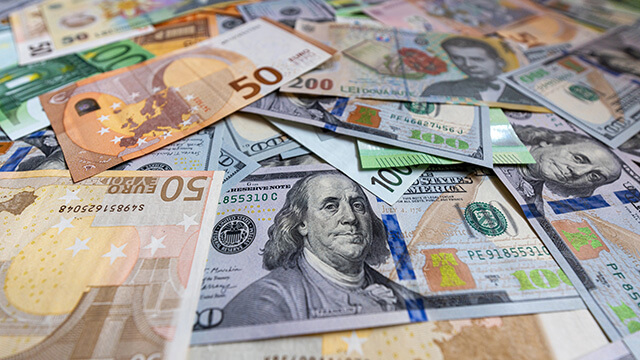
 16/07/25
16/07/25
 621
621
EUR/USD Stays Near 1.1600 as Fed Policy Outlook and Inflation Data Influence Moves
The EUR/USD currency pair experienced slight fluctuations above the 1.1600 level during the European trading session on Wednesday. Market participants are closely monitoring the Federal Reserve’s monetary policy outlook in response to recent inflation data from June. A key focus remains on whether technical trading activity could push the pair lower if support levels between 1.1590 and 1.1600 are breached.
Following a decline of over 0.5% on Tuesday, which brought the pair to a three-week low near 1.1590, EUR/USD showed signs of a modest rebound in the early hours of Wednesday. The current technical environment indicates that the broader bearish trend remains intact, although the recent correction from oversold conditions suggests some short-term stabilization.
The US dollar gained ground after the release of June’s consumer price index figures, which showed a 2.7% year-over-year increase. The rise was in line with expectations and contributed to a decrease in the likelihood of the Federal Reserve reducing interest rates in September, with market probabilities falling towards a 50% chance from the previous 70%. Consequently, the US dollar index, which measures the dollar’s performance against major currencies, advanced approximately 0.6% on the day.
Looking ahead, upcoming U.S. producer price index data for June could influence market sentiment. A notable rise could support further dollar strength, potentially pressuring EUR/USD lower. Conversely, comments from Federal Reserve officials that downplay inflation concerns might temper the dollar’s gains and limit further declines in the pair.
Technical indicators such as the Relative Strength Index remain below 40, signaling that recent upward movements are likely corrective rather than the start of a sustained reversal. Support levels are identified around the 1.1590 to 1.1600 zone, with additional downside targets near 1.1540 and 1.1500. Resistance levels may be observed at approximately 1.1660 and 1.1715.
The euro continues to serve as the currency for 19 eurozone countries and remains the second most traded currency globally, accounting for roughly 31% of daily foreign exchange turnover. European Central Bank policy decisions, especially regarding interest rates in response to inflation data, will significantly influence the euro’s direction. Strong economic indicators or higher-than-expected inflation figures in the euro area could prompt the ECB to tighten monetary policy, thereby supporting the euro’s value against the dollar and other currencies.
 Back to the Blog Main Page
Back to the Blog Main Page














